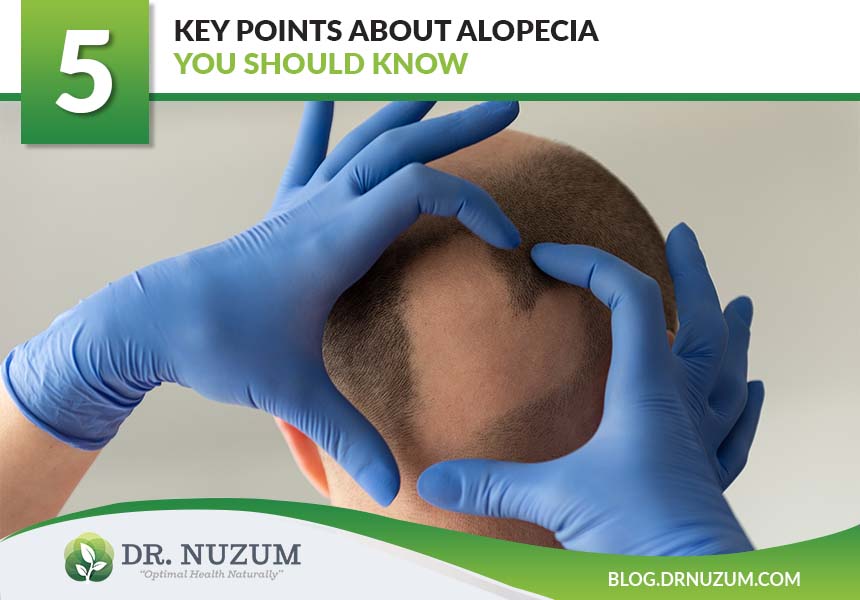Although many people deal with alopecia, no dietary or lifestyle modification has been found. Current treatments do not turn alopecia areata off. Although they stimulate the hair follicles and produce hair again, treatments need to be continued until the disease turns itself off. In this article, we will share with you some facts that you should know about alopecia.
First, we will take a look at the effects of alopecia and then learn what causes this disease. Next, you will learn how there is no way to predict hair loss due to the unpredictability of this condition. Then, we will cover information about alopecia and wrap up with treatments. Once you have finished reading, you will have a better understanding of alopecia and its causes.

1The Effects Of Alopecia Areata
There is no scarring or physical pain associated with the condition, and the affected hair follicles are not destroyed. Often, as one patch is regrowing, another patch appears. Apart from the bald patches, the scalp usually has a healthy appearance. Occasionally, there may be slight redness and a mild burning or itching feeling. The size of the bald patches and the time they last are variable.
The condition can be embarrassing and very upsetting. The stress, especially on young boys who are unable to hide their condition because of their short hair, is severe. Surveys have found that the suicide rate among these young patients is higher than would be expected. This is especially tragic, considering the disease affects appearance rather than physical health.

2What Causes Alopecia Areata
Scientists do not know what the trigger is that causes the autoimmune disease to start and stop or why the immune system suddenly disrupts the normal functioning of the hair follicles. They believe that heredity plays a part but is not the only answer. Studies show that there is a loose genetic correlation and that 20% of people with this condition have a close family member with the disease.
Researchers also suggest that viruses, infections, medicines, and environmental factors are all possible causes. Stress is also believed to have an impact. Scientists keep searching for the elusive trigger. Its discovery will allow patients to avoid relapses.

3There’s No Way To Predict Hair Loss
When complete baldness is the result of autoimmune disease, it is called alopecia areata totalis. When the same condition causes the loss of all head hair, together with all body hair, it is called alopecia areata universalis. These types of hair loss tend to be long-lasting, even permanent.
However, with the uncertainty of this disease, there is no way of predicting if the hair loss will be temporary or permanent. Regardless of how much hair is lost, the follicles remain alive. Hair regrowth may occur after many years, even without treatment.

4Alopecia Can Occur At Any Age
Alopecia areata is a skin condition that occurs as a result of your immune system mistakenly attacking your healthy tissues. This creates a condition called an autoimmune disease. An autoimmune disease can present itself in different ways, depending on which body part is affected. When the immune system damages the hair follicles, the result is hair loss.
One or more bald patches appear on the scalp. These patches are usually round in shape and the size of a large coin. Occasionally, the beard, eyebrows, eyelashes, or other body hair are also affected. Alopecia areata can occur at any age; however, it usually affects children, teenagers, and young adults. Research shows that the first attack of this disease usually happens before the age of 30.

5The Treatment For Alopecia Areata
When there are only one or two small bald patches, no treatment is the common option. Bald patches in mild cases often regrow hair in a matter of months. When less than half of the scalp is affected, the doctors’ advice is usually to wait and see.
The chances of hair regrowth within one year without treatment for a group in a study is eight out of ten. One or more recurrences of alopecia areata are common for patients. This is the case even if full regrowth of hair occurs after the first episode.

No dietary or lifestyle modification has been found, although more and more people are starting to have alopecia. With the current treatments available, there is still no way to just turn this disease off. The treatments will need to be continued until the disease turns itself off. In this article, we shared with you some facts that you should know about alopecia.
First, we took a look at the effects of alopecia and then learned what causes this disease. Next, you learned how there is no way to predict hair loss due to the unpredictability of this condition. Then, we covered information about alopecia and wrapped up with treatments. Now that you have finished reading, you have a better understanding of alopecia and its causes.

